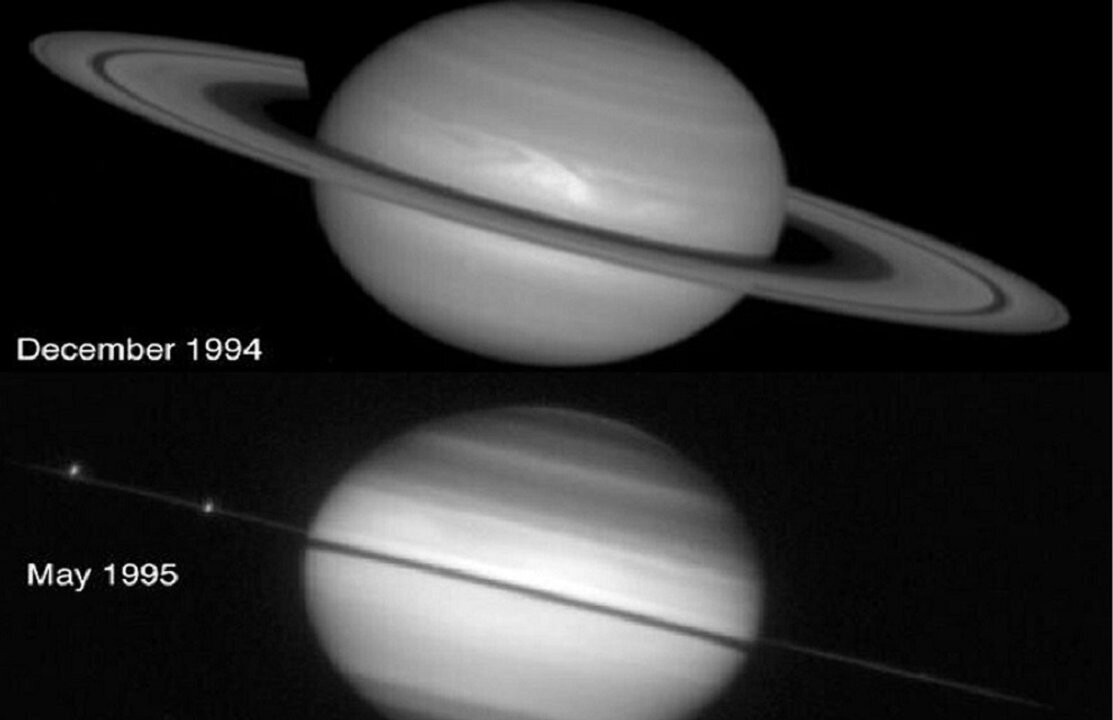
The second largest planet in the Solar System, Saturn, is about to hide its seven main rings among the 60 detected by Voyager 2. Although it's not because the price of gold has soared to the stratosphere of US$3,000 an ounce, the rings are composed of clusters of dust, rock, and ice that are divided into various groups separated by empty spaces that span kilometers. If they had been made of gold, they would have accumulated a 60% increase in two years.
"This means that our view of Saturn alternates between the top of its rings when it is tilted towards us and the bottom when it is tilted in the opposite direction," detail those from the Smithsonian. As a result, those observing the planet's evolution from Earth have a "special view with no identifiable rings," especially when our planet passes through Saturn's "ring plane," essentially "any area of space that is aligned with the edge of its rings."
In his time, Galileo Galilei could intuit with the basic instruments he had that there was something around Saturn, which he described as "ears." Today, with modern telescopes, seeing Saturn's rings is one of the most wonderful spectacles for sky watchers and amateur astronomers.
The metal of the rings reached an unprecedented zenith on Tuesday, March 18, 2025, as it surpassed the threshold of $3,038 per ounce in spot trading, a historic peak driven by persistent global worries. Saturn's rings may fall, even though they are not made of the precious metal par excellence in the jewelry world, but rather an epicenter of a convergence of destabilizing forces in the quotes.
In reality, the obscuring of the rings is a rare event that occurs approximately every 15 years and is set to leave them out of view from Earth only to gradually "reappear" before "disappearing" again in November, according to the Smithsonian Institute, an educational organization in the United States that conducts scientific and historical research and manages local museums. "As Saturn completes its orbit over approximately 29.4 Earth years, it tilts at an angle of 26.7 degrees."













